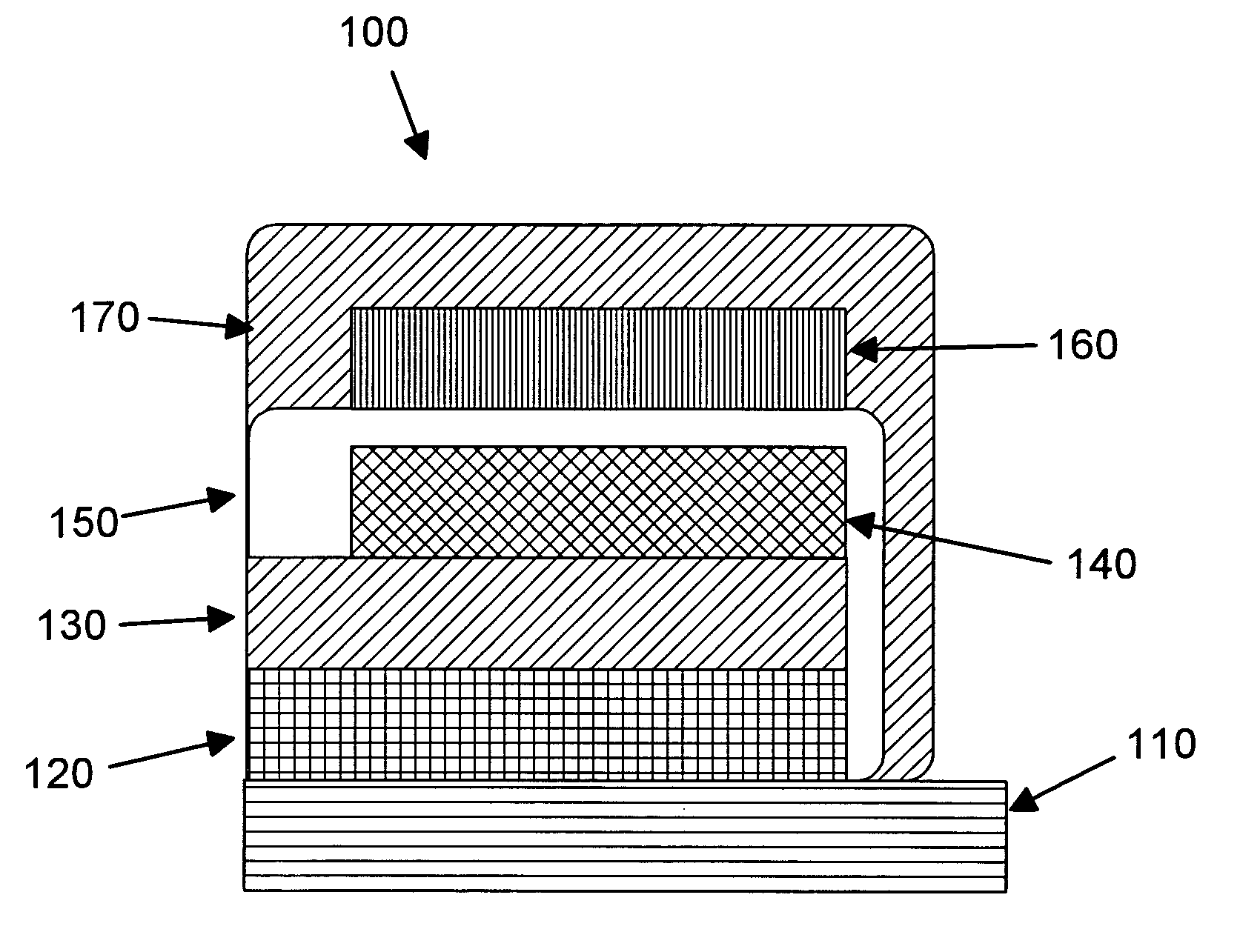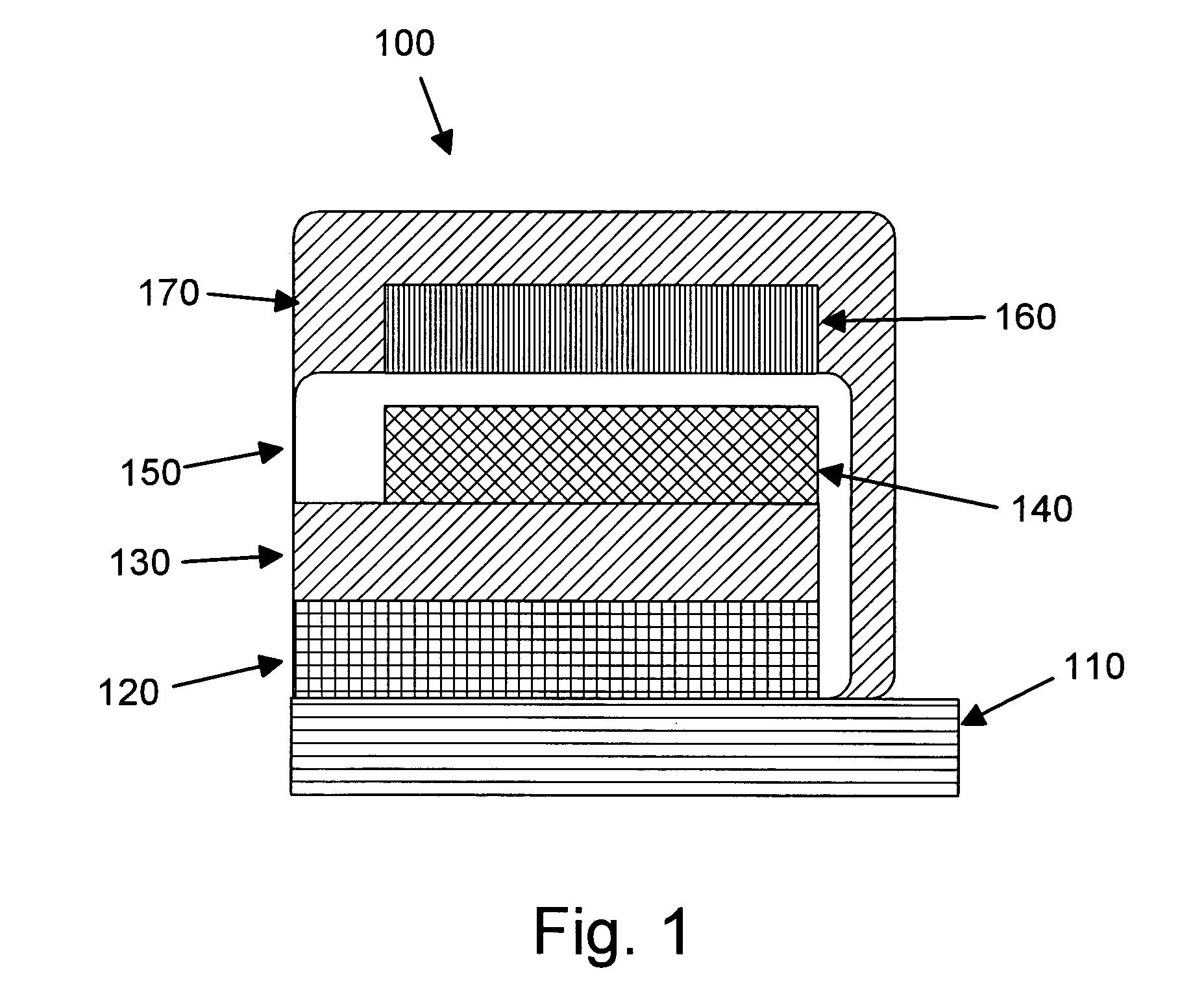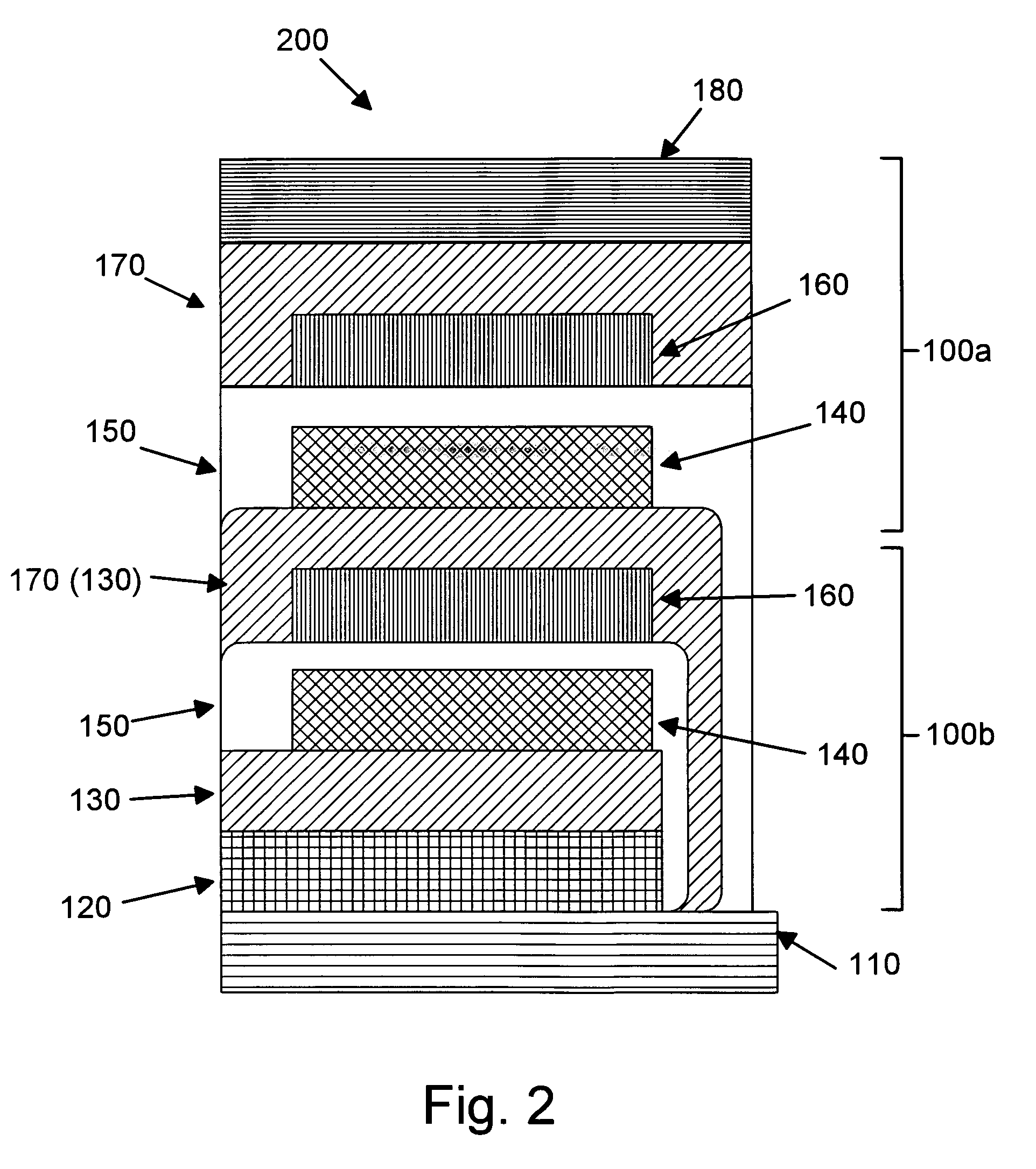Rechargeable thin film battery and method for making the same
a thin film battery and rechargeable technology, applied in the field of thin film batteries, can solve the problems of unsuitable for severe environments, low energy density and specific energy of batteries, and addition of dead weight and dead volum
- Summary
- Abstract
- Description
- Claims
- Application Information
AI Technical Summary
Benefits of technology
Problems solved by technology
Method used
Image
Examples
example 1
[0112]Typical battery performance results are shown in FIG. 5 for a side-by-side cell configuration with cells having a 1 cm2 area. In this test, the bottom and top cells were measured from cells in two adjacent batteries. For each cycle, the battery was charged at a fixed current of 10 μamps to a fixed charge of 3.8 volts. The measurements shown were taken during the fifteenth battery cycle. As shown by FIG. 5, the individual cell voltages for the charged battery ranged between 3.1 to 3.8 volts while the overall battery voltage after charging was approximately 7.2 volts.
example 2
[0113]Typical battery performance results are shown in FIG. 6 for a stacked-cell configuration with cells having a 1 cm2 area. For each cycle, the battery was charged at a fixed current of 10 μamps to a fixed charge of 3.8 volts. The measurements shown were taken during the fourteenth battery cycle. As shown by FIG. 6, the individual cell voltages for the charged battery ranged between 3.2 to 3.8 volts while the overall battery voltage after charging was approximately 7.1 volts.
[0114]A thermally evaporated LiPON sample was prepared by electron beam heating of a vacuum melted lithium phosphate in a background nitrogen pressure of 4×10−4 torr for 15 minutes with a beam current of 35 mA and beam voltage of 10 kV. The resulting deposit was approximately 0.3 μm thick. Surface roughness measurements made on the resultant deposit over an area of approximately 25 um2 area indicated that the deposit surface was very smooth with an RMS surface roughness of between 3 and 4 nm.
[0115]A sputtered...
PUM
| Property | Measurement | Unit |
|---|---|---|
| Time | aaaaa | aaaaa |
| Energy | aaaaa | aaaaa |
| Volume | aaaaa | aaaaa |
Abstract
Description
Claims
Application Information
 Login to View More
Login to View More - R&D
- Intellectual Property
- Life Sciences
- Materials
- Tech Scout
- Unparalleled Data Quality
- Higher Quality Content
- 60% Fewer Hallucinations
Browse by: Latest US Patents, China's latest patents, Technical Efficacy Thesaurus, Application Domain, Technology Topic, Popular Technical Reports.
© 2025 PatSnap. All rights reserved.Legal|Privacy policy|Modern Slavery Act Transparency Statement|Sitemap|About US| Contact US: help@patsnap.com



